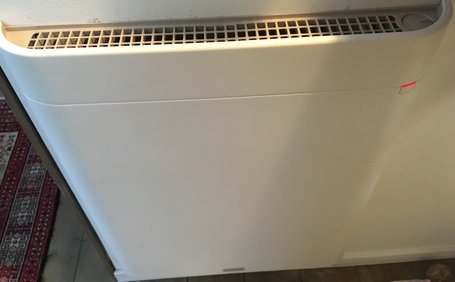
We love the toasty warmth our Kimberly wood stove throws off, but...it doesn't stay lit all night and it obviously doesn't continue burning when we're not here.
For our first 18 months in the house, we relied on our DeLonghi portable radiant heater to augment the wood stove, even plugging in a second unit for the coldest days. We kept the space heater(s) set at a base temp (between 64 and 70 degrees, depending on the last person to fiddle with the thermostat). While the heater is quiet, relatively efficient and effective, it takes up floor space and requires a cord. (Some of us have serious cord issues...)
We continued looking for a more efficient, space-saving, cordless heat source. Thanks to other tiny house blogs like The Tiny Project, Tiny House Giant Journey and Jess and Tim's Tiny House, we knew to take a close look at the Envi convection heater. Its slim, wall-mounted design alone makes it a great tiny house fit—no floor space required! I also love that it blends in with our white walls. (If your walls aren't white, it can be painted.)
So, it's an obvious win-win when it comes to size and looks. But does it keep us warm?
The short answer: it certainly helps keep us warm. We chose to mount our Envi on the bathroom wall, a space the furthest away from our wood stove. Placing it in that walled space means it could never heat our entire tiny house. But we're impressed enough with the Envi's performance, that we're getting a second unit to mount in the main living space of the house. We think the two wall-mounted heaters will be sufficient to keep us at a base warm temp. Then we'll fire up the wood stove when we're here, and we want more heat.
Some specs on the Envi:
Please click on the photos below for more details.
For our first 18 months in the house, we relied on our DeLonghi portable radiant heater to augment the wood stove, even plugging in a second unit for the coldest days. We kept the space heater(s) set at a base temp (between 64 and 70 degrees, depending on the last person to fiddle with the thermostat). While the heater is quiet, relatively efficient and effective, it takes up floor space and requires a cord. (Some of us have serious cord issues...)
We continued looking for a more efficient, space-saving, cordless heat source. Thanks to other tiny house blogs like The Tiny Project, Tiny House Giant Journey and Jess and Tim's Tiny House, we knew to take a close look at the Envi convection heater. Its slim, wall-mounted design alone makes it a great tiny house fit—no floor space required! I also love that it blends in with our white walls. (If your walls aren't white, it can be painted.)
So, it's an obvious win-win when it comes to size and looks. But does it keep us warm?
The short answer: it certainly helps keep us warm. We chose to mount our Envi on the bathroom wall, a space the furthest away from our wood stove. Placing it in that walled space means it could never heat our entire tiny house. But we're impressed enough with the Envi's performance, that we're getting a second unit to mount in the main living space of the house. We think the two wall-mounted heaters will be sufficient to keep us at a base warm temp. Then we'll fire up the wood stove when we're here, and we want more heat.
Some specs on the Envi:
- Low energy requirements (475 watts; 3.95 Amps; 120 volts).
- One unit heats up to 130 square feet.
- Built-in thermostat.
- Corded and cordless models available.
- Space saver: wall-mounted and only two inches thick.
- Wallet-friendly pricing (less than $150).
- Quiet.
- Safe (even at its highest setting, it won't burn anyone).
Please click on the photos below for more details.
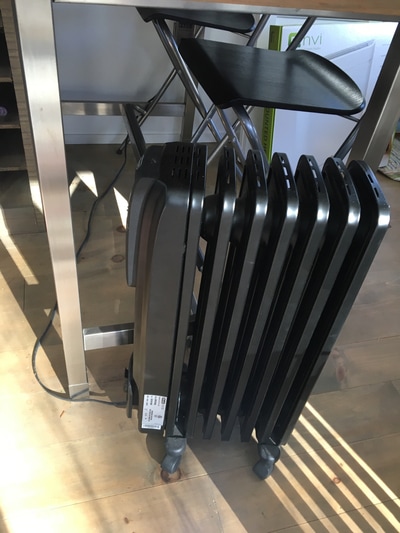
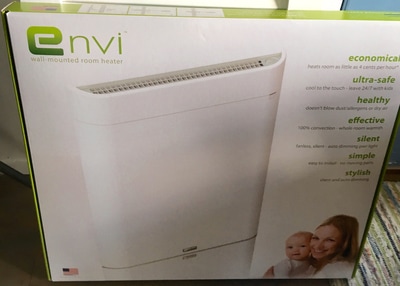
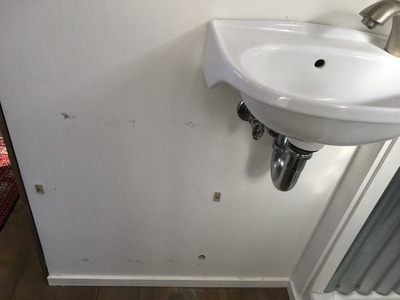
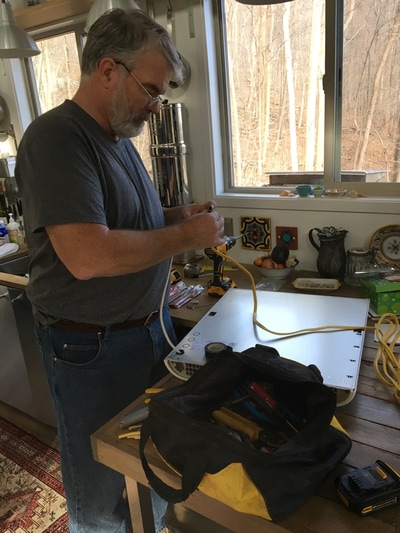
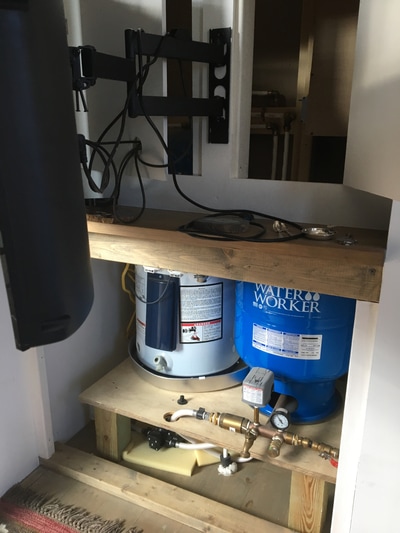
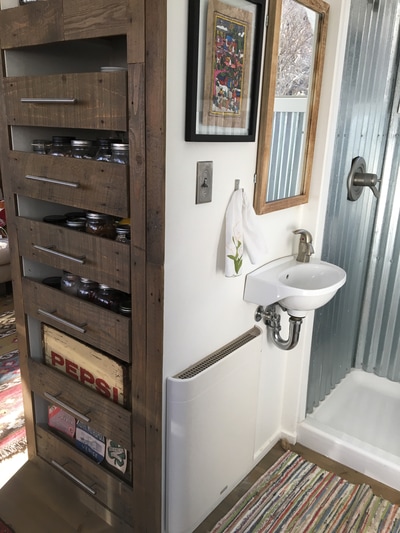
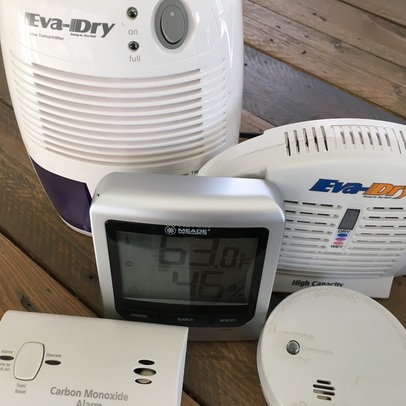
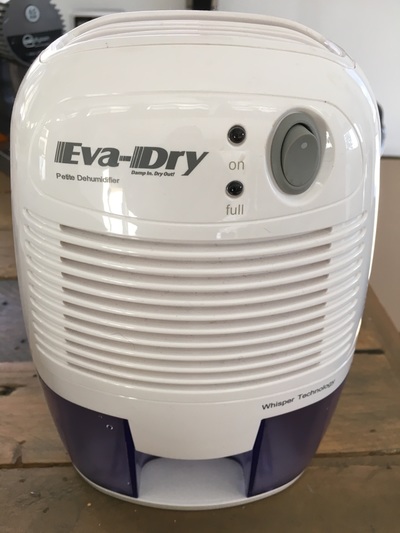
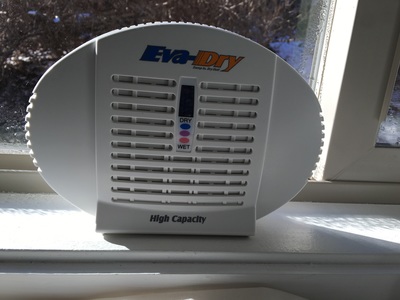
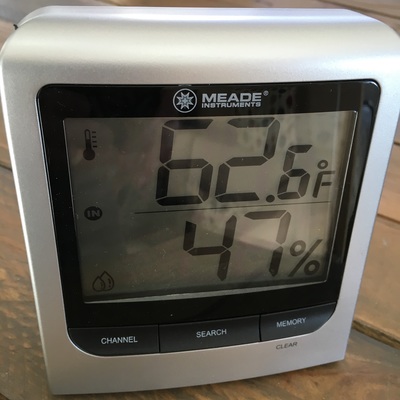
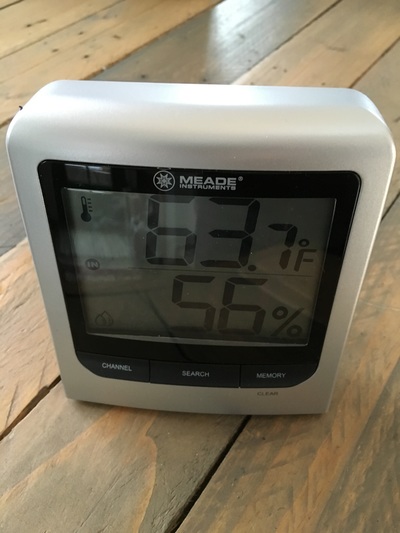
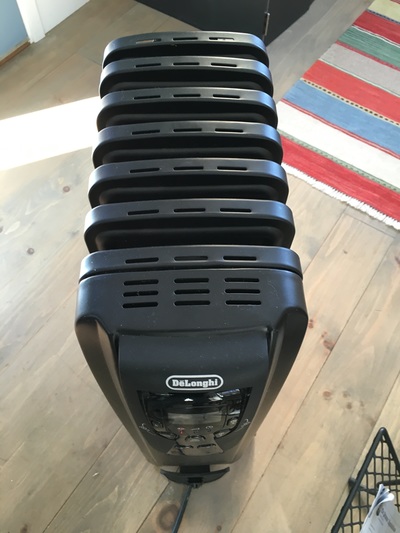
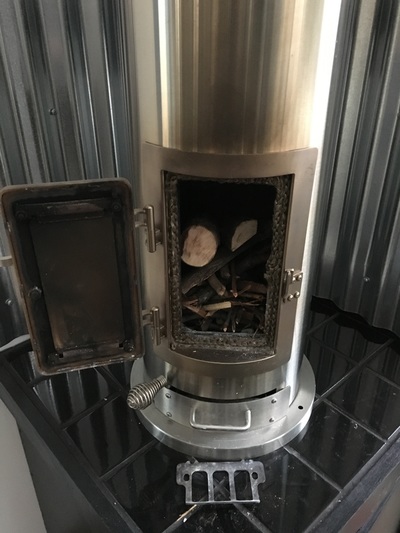
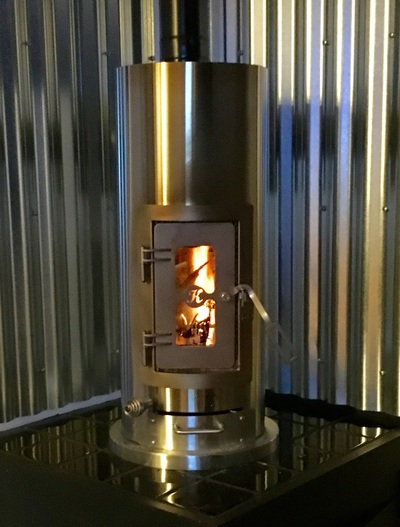
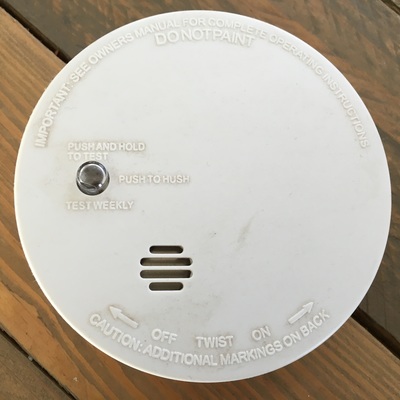
 RSS Feed
RSS Feed
